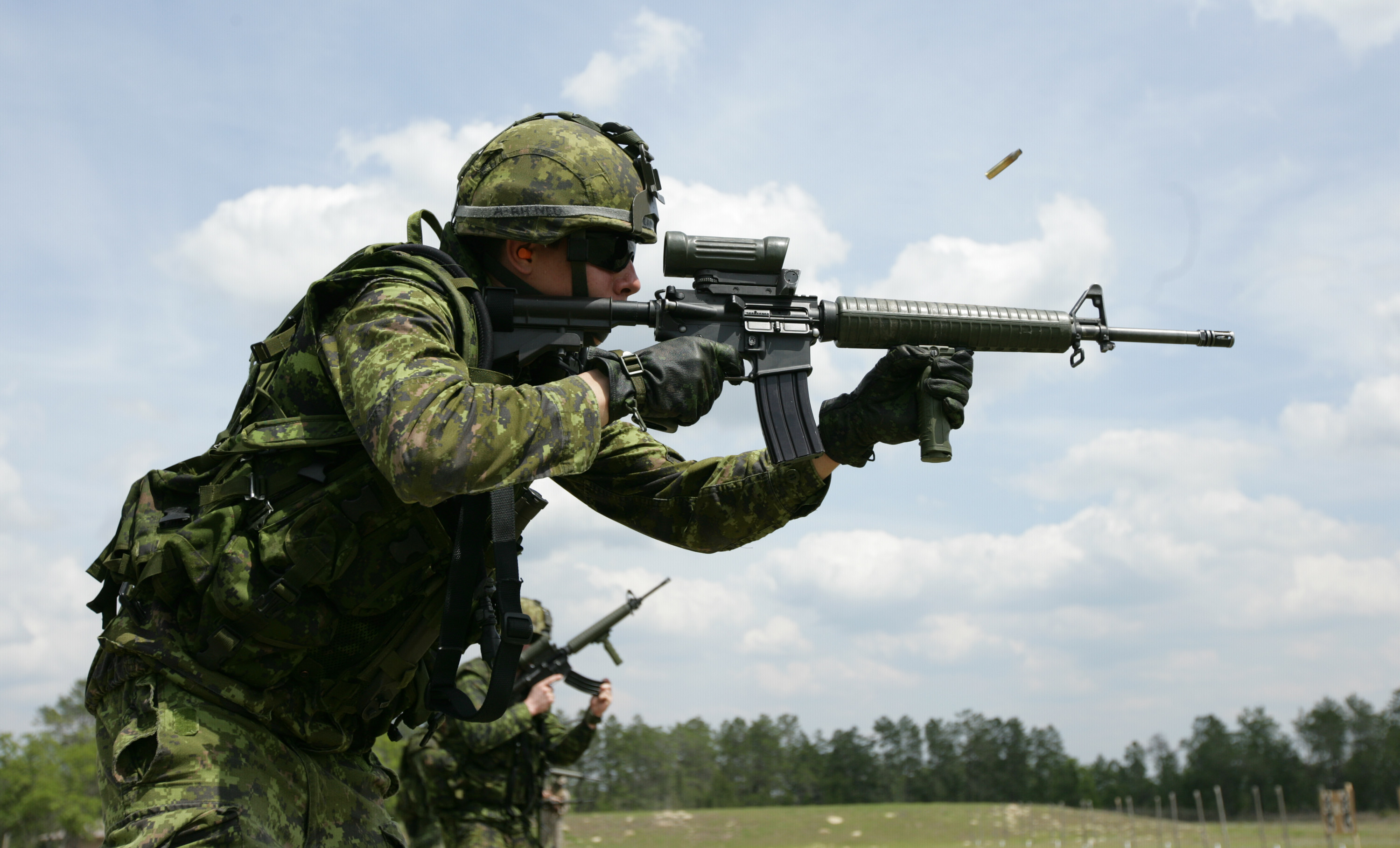Recent advances in defence technology suggest that dreams from the science fiction of our youth might soon be realized. The United States Navy deployed a fully-functioning laser defence system in late 2014, representing a possible shift in how navies will engage in combat in the 21st century. The increasingly prevalent use of drones, whether they be unmanned submarines or the infamous MQ-9 Reapers, also reflects the increasingly sophisticated role of technology on the battlefield. But the media might soon be reporting not on the latest project of the US’ Defence Advanced Research Projects Agency (DARPA) but on advancements made by the Canadian Forces.
In keeping with some of the objectives set out in what was then the Canadian Army’s newest strategic doctrine in 2007, “Land Operations 2021: Adaptive Dispersed Operations, the Force Employment Concept for Canada’s Army of Tomorrow”, the Department of National Defence (DND) launched the Integrated Soldier System Project (ISSP). With $310 million in funding, the ISSP is intended to provide soldiers with more information to succeed on the battlefield: tracking the location of friendly troops, sharing targeting information with artillery assets with greater ease, and enjoying hands-free communication with comrades. The project also envisions providing each soldier with a single power source; currently, soldiers have separate batteries for their radios, night vision goggles, and various other pieces of equipment. A single connected power source will make recharging simpler and presumably cut down on the amount of weight a soldiers may have to dedicate in their rucksack to batteries.
Related to the ISSP, DND has dedicated at least $1 billion toward the Small Arms Replacement Project (SARP), which has been underway since 2007. This project envisions the replacement of many of the small arms and light weapons employed by Canadian Forces personnel, in particular soldiers of the Canadian Army. It is difficult to ascertain the nature of the weapon which will someday replace the C7A2, Canada’s standard-issue assault rifle. But there are some details from previous SARP procurements that are known, namely a new Marksman Rifle System (MRS) and a new Semi-Automatic Sniper Weapon (SASW). The former was not intended to replace the specialized bolt-action rifles issued to Canadian Army snipers; rather, the MRS is intended to equip other members of a sniper team who are tasked with protecting a sniper from medium- or short-range threats. There was an immediate need for such a weapon early in the Canadian intervention in Afghanistan, and so the ArmaLite 7.62mm AR-10T SASW was acquired in 2003. The 5.56mm C7CT was also acquired from Diemaco (now Colt Canada) to fulfill a similar role.
The SASW procurement currently underway through SARP is intended as a replacement to the MRS. The AR-10T and C7CT rifles had been acquired as a stop-gap measure for the Afghanistan mission and many of the weapons currently in use have begun to suffer wear and tear. The new rifles are being dubbed by the Canadian Forces as ‘precision weapons’ – semi-automatic, gas-operated rifles firing 7.62mm rounds and interestingly are expected to be based on an ‘assault rifle platform’. This suggests that, if the weapon secured under the SAWS procurement proves successful in combat, the design could serve as the inspiration for the Canadian Forces’ future standard-issue assault rifle. Since the C14A1 issued to Canadian snipers was originally a civilian design, intended for hunting and sport purposes, some observers have speculated that the SASW will be based on such weapons as the Panther Arms DPMS LRT-SASS or the American Spirit Arms 308 Side Charger Rifle. More likely, however, is that the Canadian Forces will turn to Colt Canada’s new LE901 series of rifles. This manufacturer has provided much of the Canadian Army’s range of personal weapons and would have the flexibility to adapt the LE901 to suit other functions and roles on the battlefield.
Whatever the eventual shape of the SASW, it is apparent that DND’s investment in research and development through the ISSP, SARP, and other programs is returning dividends. Canada is by no means on the verge of introducing the powered exoskeletons depicted in the film “Edge of Tomorrow”. But the expected conclusion of these projects in 2022 should see a more connected, more coordinated Canadian Army, prepared to combat the full spectrum of threats presented in a counter-insurgency or counter-terrorism environment.





